The era of new energy vehicle (NEV)※ adoption is likely to arrive in the near future. However, Japan is still in its early stages, and opportunities to truly feel the changes that will occur when NEVs become deeply integrated into society are not abundant. In contrast, China has already seen significant progress, with some months even seeing NEVs account for half of all automobile sales.
Therefore, at the end of April, we organized a tour for Dentsu Inc. members and business partners, centered around observing the Beijing Motor Show. Two of us, who have experience stationed at Dentsu Inc. China, participated. With support from local offices and experts, we aimed for a multidimensional understanding by not just "looking at new cars," but simultaneously examining sales, usage, and infrastructure conditions. I would like to briefly introduce the details of this tour.
※New Energy Vehicles (NEVs)... Electric Vehicles (EVs), Plug-in Hybrid Vehicles (PHVs), and Fuel Cell Vehicles (FCVs).
NEV Competition Enters Full Swing with Smart Features
The Beijing Motor Show (MS) was held at the China International Exhibition Center from April 25 to May 4. Held in Beijing for the first time in four years, its theme was "New Era, New Vehicles," reflecting the high expectations for China as a global leader in mobility and NEVs.
Attention on the world's largest market was high, with 117 world premieres, including 30 models announced by joint ventures with foreign companies like Japan. NEVs accounted for 278 models unveiled, representing 80% of the announced vehicles. A notable feature of this MS was the shift in product differentiation and selling points. Beyond traditional clear-cut factors like range, price, and subsidies, emphasis moved toward more complex aspects: connected features, SDV (Software-Defined Vehicle), enhanced in-car entertainment, autonomous driving capabilities, and diversified collaborations. This signaled a growing segmentation of positioning within the NEV category. Amid intensifying price competition for pure electric vehicles (BEVs), manufacturers also showed a growing emphasis on plug-in hybrid vehicles (PHVs).
The most notable entry: Xiaomi Auto, the world's third-largest smartphone maker
Xiaomi Auto is the first name mentioned in discussions about this year's MS. Xiaomi, the world's third-largest smartphone company, announced its entry into the BEV market late last year. During CEO Lei Jun's presentation at MS, he stated that over 70,000 pre-orders had already been received, with plans to expand the lineup. The booth was so popular that entry restrictions were necessary. After his speech, Lei Jun visited rival booths, engaging in conversation with CEOs Wang Chuanfu (BYD), Li Bin (NIO), He Xiaopeng (XPeng), and Li Xiang (Li Auto). Every move made by these 40- to 50-year-old CEOs of China's emerging EV makers drew media and social media attention, revealing their dual roles as rivals and partners working to invigorate the NEV market.
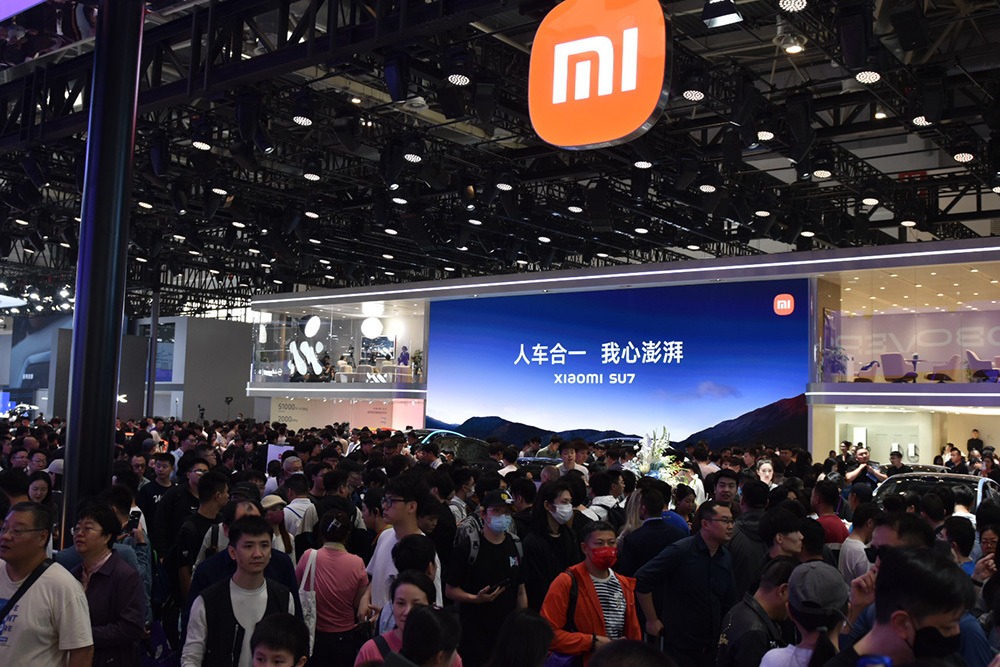
The Xiaomi Auto booth overflowing with people
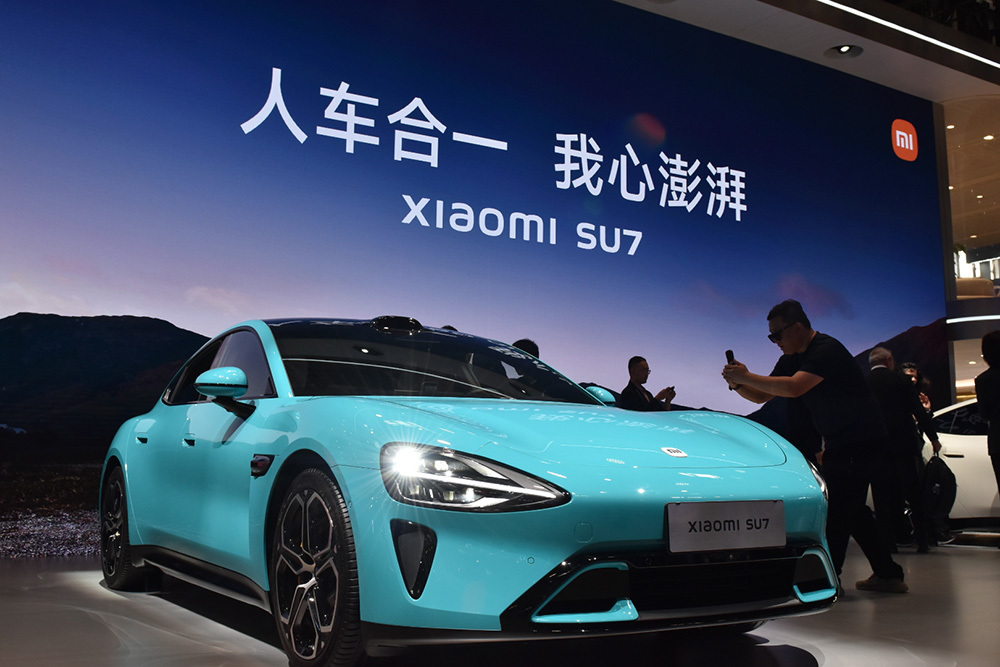
Xiaomi Auto's SU7 sports sedan
IT giant Huawei made its presence felt everywhere as a partner, announcing collaborations with 8 companies for smart driving systems and 4 OS platforms for operating systems. In addition to unveiling a new model of the popular AITO vehicle developed with China/Ceres, it also introduced the new brand "STELATO" developed with China/BAIC. Huawei is not only establishing itself as a partner for smart features that enhance NEV competitiveness, but also as a major manufacturer.

Huawei's technology-related booth was set up outdoors.
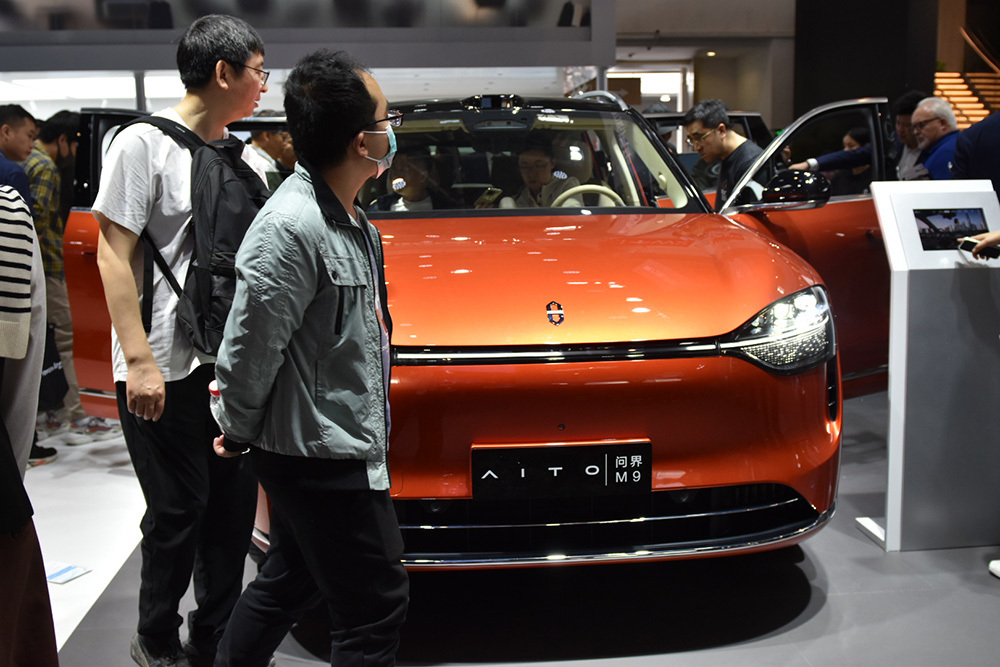
The AITO M9, favored by the high-end market
The difference between Xiaomi Auto and Huawei is that the former targets a younger demographic, drawing in customers with the appeal of CEO Lei Jun. Female users even post about the CEO's fashion on social media, making it a topic beyond just cars. The latter, as a trusted, established Chinese brand with proven technological prowess, enjoys strong support from government-affiliated employees and the affluent. It occupies the high-end segment in smartphones, and its car lineup is rich in models priced above 300,000 yuan.
Can Japanese and German brands stage a comeback through China localization?
In contrast, Japanese and German automakers are each pursuing localized strategies, signaling their determination to make a comeback in the Chinese market.
Toyota Motor Corporation jointly developed the "bZ3C" with BYD and the "bZ3X" with GAC Motor, unveiling them globally for the first time. It announced a partnership with Tencent to integrate AI and cloud technologies into models for the Chinese market. Honda unveiled its dedicated BEV brand for China, the "Ye Series," incorporating technology from Huawei (displays), Shenzhen Hangsheng Electronics (in-vehicle cockpit), and iFlytek (voice recognition AI). Nissan Motor announced two BEVs and two PHVs, alongside a partnership with Baidu, clearly aiming to enhance its competitiveness in AI.
Among German automakers, Mercedes-Benz aims to expand connectivity, digitalization, autonomous driving, and in-car entertainment. It also announced a partnership with Tencent. Volkswagen presented strategies to address Chinese market needs, shorten model development and market launch times, and reduce costs, emphasizing collaboration with Chinese companies like XPeng Motors.
In China's NEV market, it will be interesting to see how Japanese and German automakers will fight back through partnerships with Chinese companies.
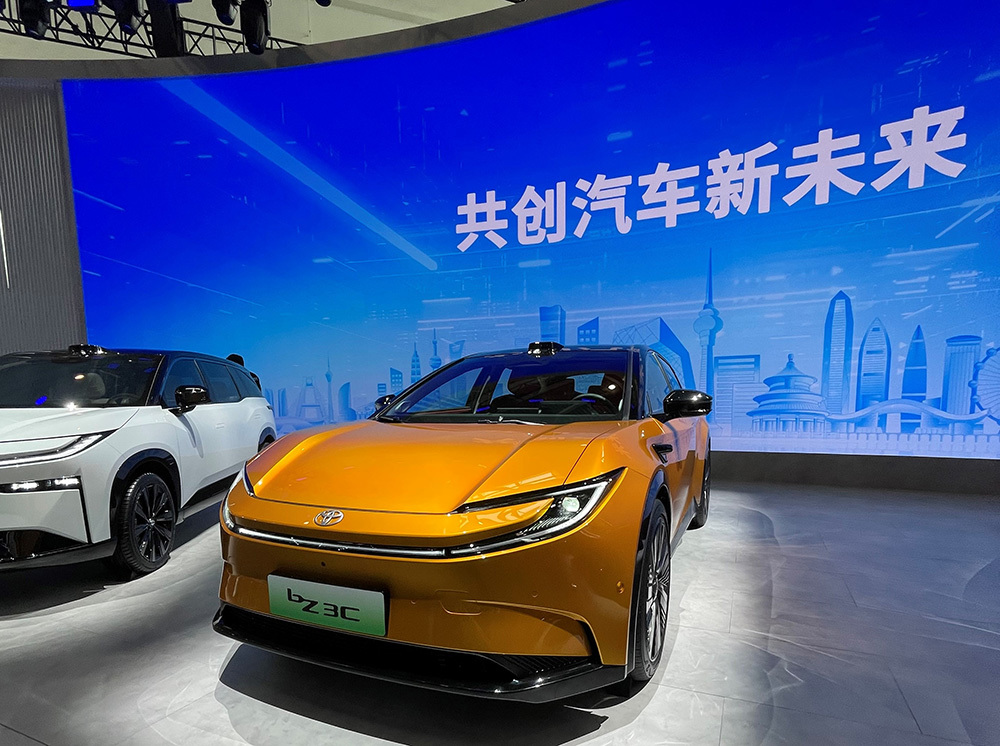
Toyota's bZ3C
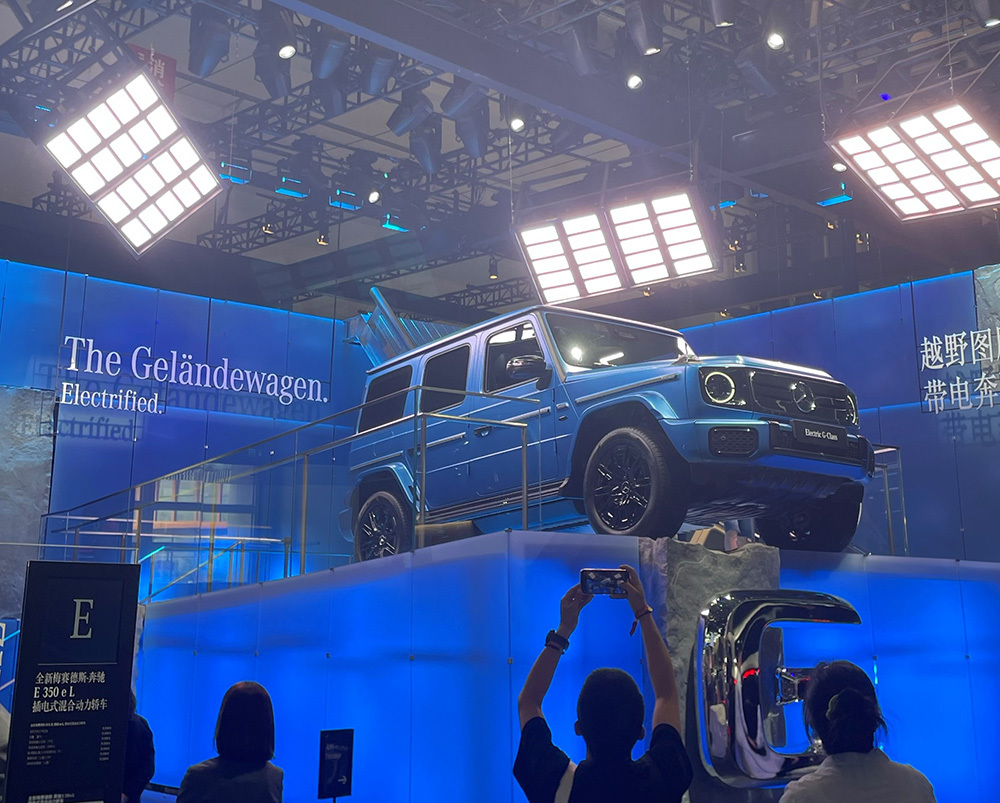
Mercedes-Benz G-Class (BEV)
"What about the sales floor?" "How are charging facilities being used?" Further field verification
Another major purpose of this tour was to see and experience firsthand the changes occurring in China, where NEV adoption is advancing. To that end, we first invited sales managers from BYD—which rapidly recovered its performance through PHV sales—and NIO, a leading independent emerging NEV brand known as a "new force," for interviews. Their insights—covering shifts in sales methods, current challenges, and consumer focus points—draw from over a decade of industry experience and extensive gasoline vehicle sales backgrounds. This provides invaluable "firsthand accounts" unavailable to those in Japan.
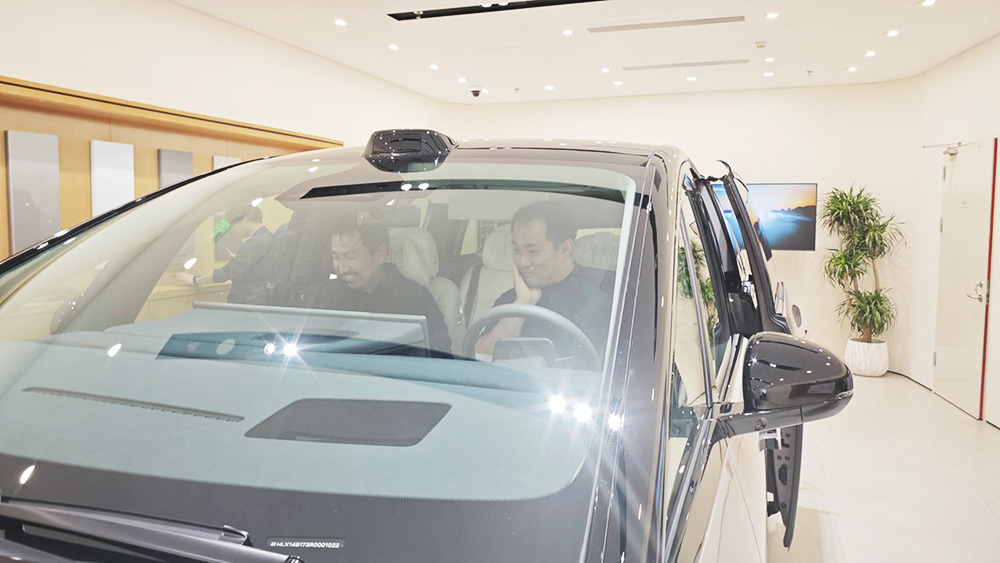
We also visited multiple Chinese brand dealerships.
Furthermore, we visited dealerships located in large shopping malls in central Beijing to observe their actual selling points and store differences. Despite being a weekday afternoon, NIO, known for its generous owner services, had a high volume of visitors. NIO incorporates an owner-exclusive cafe, creating a natural flow into the store and opportunities to engage with the brand.
NEVs also significantly impact the proliferation of charging infrastructure, not just vehicles themselves. From this perspective, we invited the Vice President of a leading national charging station operator and the President of a company handling equipment installation and maintenance in residential areas for interviews. The vice president of the operating company shared insights on the macro competitive environment and challenges as a business. The president of the installation company provided micro-level anecdotes only possible from daily field experience, such as "how residents in a housing complex manage when all charging stations are occupied."
Following the interviews, we toured a nearby shopping mall parking lot and a large-scale charging station in the suburbs. Combining expert interviews with on-site visits helps solidify the insights gained.
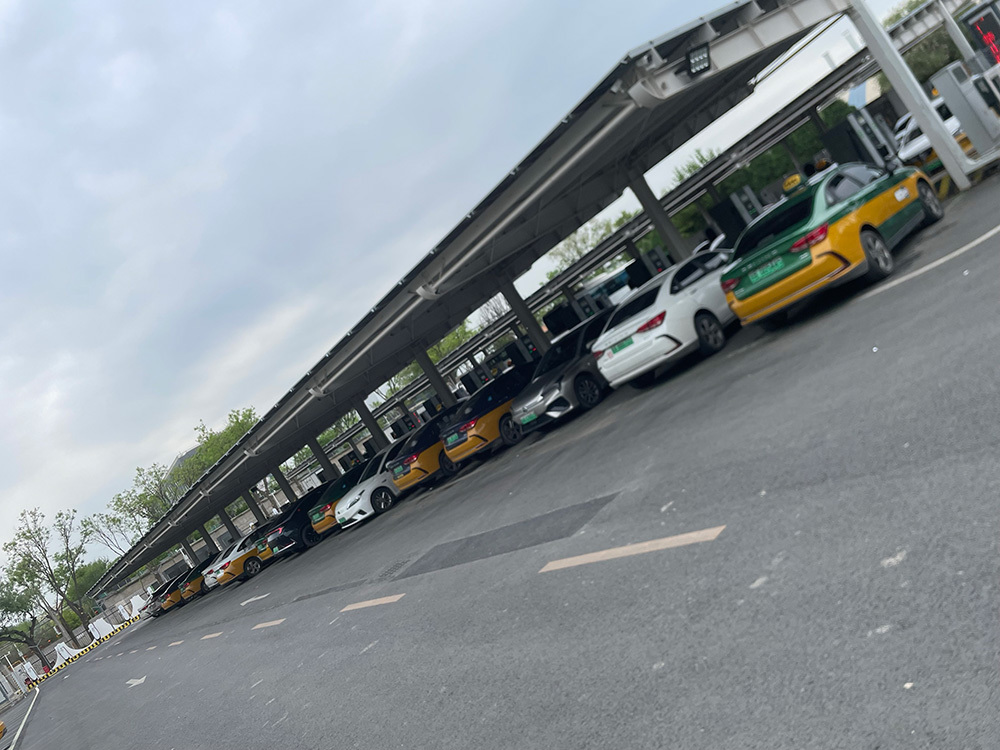
At the large charging station in the Beijing suburbs, many taxis were visible. The green license plates indicate NEVs.

A Tesla-exclusive charging station in the underground parking lot of a Beijing mall
Here too, NIO's presence stood out. The sight of battery swaps completed in under three minutes while remaining seated in the car was truly impressive. Naturally, this was a dedicated NIO booth, contributing to its differentiation from other manufacturers.
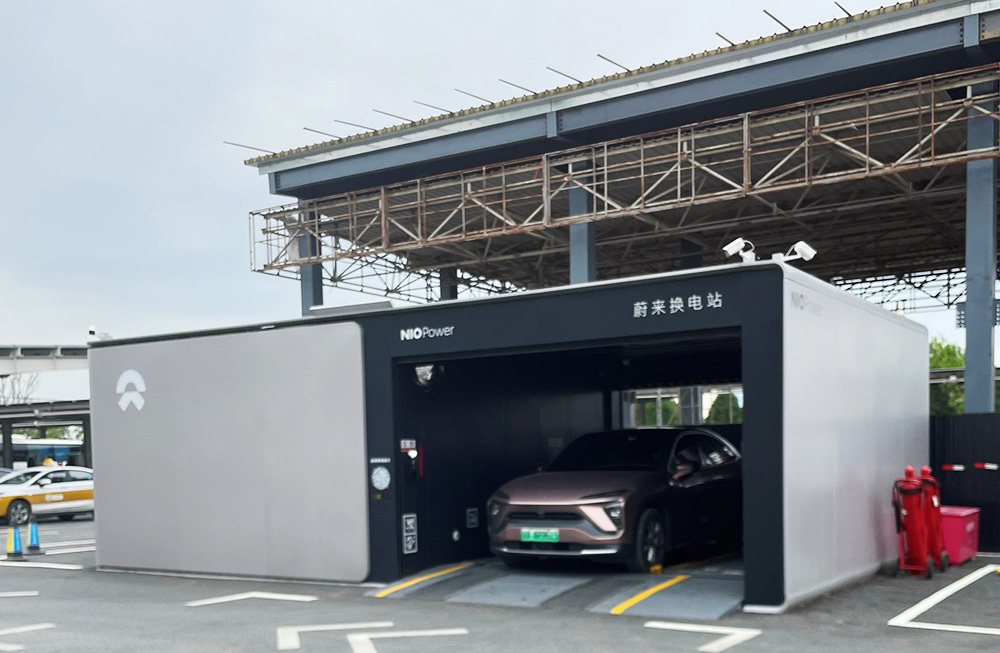
NIO's battery swap station. Drivers remain in their vehicles while the battery swap is completed in 3 minutes.
The Future of Dominance in China's Automotive Market
Although China is currently said to be in a recession, it remains one of the world's largest automotive markets. The gathering of many Japanese and Western manufacturers at Beijing MS underscored the continued high level of attention focused on the Chinese market.
The frequent sight of charging stations in cities, as common as convenience stores, makes the proliferation of BEVs in China palpable. While policy influences play a role, more detailed targeting becomes crucial for NEV marketing. For instance, Li Auto has achieved success by focusing on "families," and NIO's owner community is also well-known. With Xiaomi Auto's entry, the race for supremacy will undoubtedly become more chaotic. Amidst this, Japanese automakers have recently announced new models and partnerships with Chinese companies. Their trajectory is also worth watching.
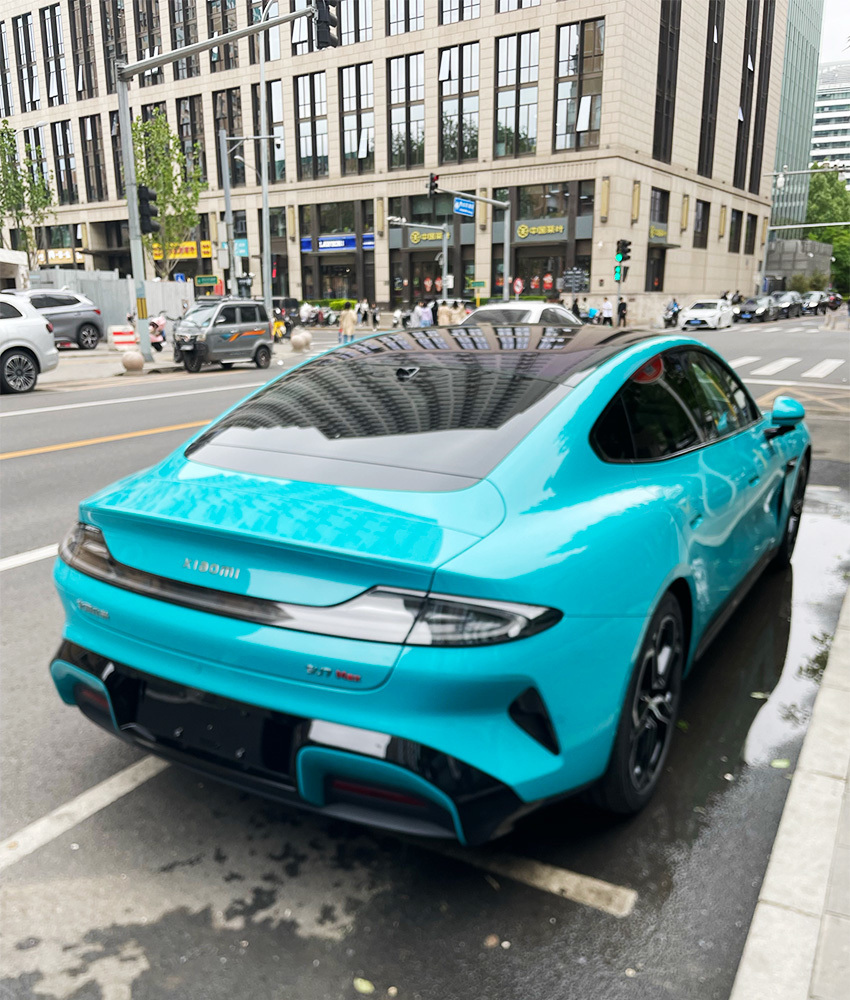
Xiaomi SU7 began deliveries in early April. I've spotted them around Beijing too.


















